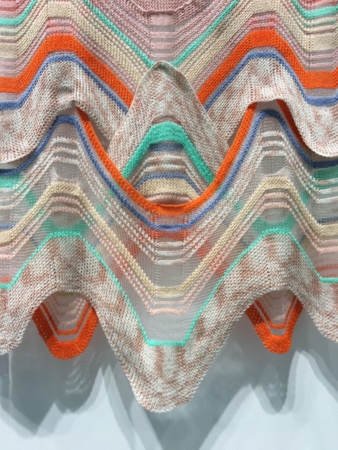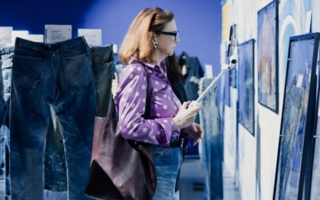04/04/2018 – Textile trade fairs spring/summer 2019 — auf Deutsch lesen
Normality and frustration
The European textile fairs for S/S 2019 have been successful on the whole. the textile industry is still striving towards a sustainable future.
It’s a wrap on the European textile trade fairs for the spring/summer season 2019. A total of 20,350 visitors attended Munich Fabric Start (presenting around 1,800 collections), a good 1% increase on February 2017. Milano Unica also recorded a 2.4 % climb in company visits with 5,949 firms visiting the Milano Rho exhibition centre. This included many East-Asian representatives who used the holidays around the Chinese New Year to substitute Milan for Paris in their sourcing calendars. Fair statistics show that numbers were up 70 % for visitors from Hong Kong and 19.5 % for visitors from China. But Milano Unica also attracted more Russians (+54.5 %) and Germans (+50 %). Absolute figures, however, have not been released. Texworld and Première Vision in Paris had to be content with fewer visitors from overseas due to the New York shows and the holiday season in Asia. Le Bourget was able to keep numbers steady compared to last year with 13,606 attendees. Première Vision in Paris Villepinte at the Parc des Expositions, however, saw a drop of 3 % to 54,500 visitors.
A changing industry
For the first time, Texword already opened on Sunday to give managers and decision makers the opportunity to gather information. According to Michael Scherpe, President of Messe Frankfurt France, this is not always possible during the busy week. Some exhibitors were not as satisfied with this decision as they felt that it did not draw enough visitors. However, they made use of the extra time to network with each other. On the whole, the fair received positive feedback from participating companies.
The European textile fairs revealed a new geopolitical trend in production. As European fashion companies favour short-term programmes, North African countries as well as Turkey are becoming more attractive manufacturing sites. Gildas Minvielle, Director of the Economic Observatory at the IFM (Institute Français de la Mode) confirmed this development in an interview with Première Vision. Turkey has already been benefitting from this shift for some time now, while Morocco has recently joined the contenders by offering political stability. Similarly, Portugal and Italy are also being presented with promising opportunities in knitting, according to Minvielle. There is general consensus, however, that China will remain the leading manufacturing country for high volume orders. Andreas Eickelmann, co-owner of Netex, a German textile company based in Herrenberg with fabric production sites in China also mentions Ethiopia: “There’s a lot of investment happening at the moment,” he says. The same is true for North Africa in general, with the EU planning to support Africa’s agricultural economy in an effort to alleviate the pressures of migration. While these countries need to create jobs for their citizens, Europe’s textile industry is struggling to recruit junior employees. The industry is facing competition from other fields, that are much more attractive to young people. Tomàš Laul, Managing Director at La Linea, a specialist in printed shirting and blousing, says that the Czech Republic is having to recruit from abroad due to historically low levels of unemployment and a lack of training for textile experts.
Read the complete article by Regine Hövelmann in our printed issue textile network 3-4 2018, appeared on 22th March 2018.





